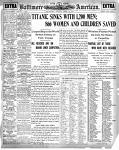Journalism has thrived on disruptive technologies. From moveable type to Linotype, from print to broadcast – each shift has opened new opportunities for communication. Each shift has also transformed the economic model that underpinned journalism, often in ways that could not be foreseen.
The new media is distracting journalism and audiences starting to shift from reading newspapers (hard copy news) to online news.Today, journalism is fragmenting among a fascinating array of news sources and social networking sites.
Like all crises, the challenges journalism faces are rewriting everything we thought we knew about the news media and causing us to question the very basis on which the industry has survived and prospered for a hundred-odd years.
Whether all newspapers will survive is no longer a parlour game but a genuine consideration. Newspapers had evolved during early 1950s and has become one of the most important source of media that deliver and update the public with latest news. Back then, newspapers only have printed texts but as years gone by according to Kress & Van.Leeuwen (1998), the written text is no longer structured by linguistic means, through verbal connectors and verbal cohesive devices but visually, through layout, through the spatial arrangement of blocks of text, of pictures and other graphic element of the page. Images, graphics, colours will attract more readers compare to newspaper back then.
Examples of New and Old Newspaper:


(Source: google.com.my)
It was both exciting and disquieting. Exciting because journalists are pushing the uses of technology to produce new and progressive ways of keeping the public informed. Disquieting because the mainstream industry is in such turmoil. High levels of debt, falling revenues and collapsing share prices, have led many into a vicious cost-cutting cycle. More than 12,000 journalists have lost their jobs so far this year, on top of about 2,200 in 2007. This is because the 24 hour television channels and the Internet affects the mainstream industry. This lead to newspaper around the world to launch the online editions in order to keep up with the circulation of audience.
Will newspaper die one day? In May 2008, a summit of senior media executives, journalists, academics and researchers organised by the Media Alliance listened in horrified fascination as Roy Greenslade, one of Britain’s leading media commentators, predicted the death of newspapers.
“Popular newspapers, the mass newspapers, are dying and will die. They have no future whatsoever. I’m sad to see newspapers go. I worked on them for 40 years.”1 Roy Greenslade, Future of Journalism summit, Sydney, May 2008.
Again, the main consent is all about the content. The most interesting topics will attract the most readers. In short, the best story with the best writer win the race.
I shall give you some questions to ponder about:
- How will newsrooms like?
- How will journalists’ jobs change with technology and business conditions?
- How will journalism itself change?
References:
1. Christoper Warren, The Future of Journalism, viewed on June 15, 2009 at 2.39 a.m. http://www.thefutureofjournalism.org.au/life-in-the-clickstream/53-foreword.
2. Kress, G. & van Leeuwen, T. 1998. “Front pages: The Critical analysis of newspaper layout,” Approaches to Media Discourse, p.186-187.
3. Larry Parlor, Teaching the Future of Journalism, Digital Media Center, viewed on June 15, 2009 at 2.41 a.m. http://www.ojr.org/ojr/stories/060212pryor/.